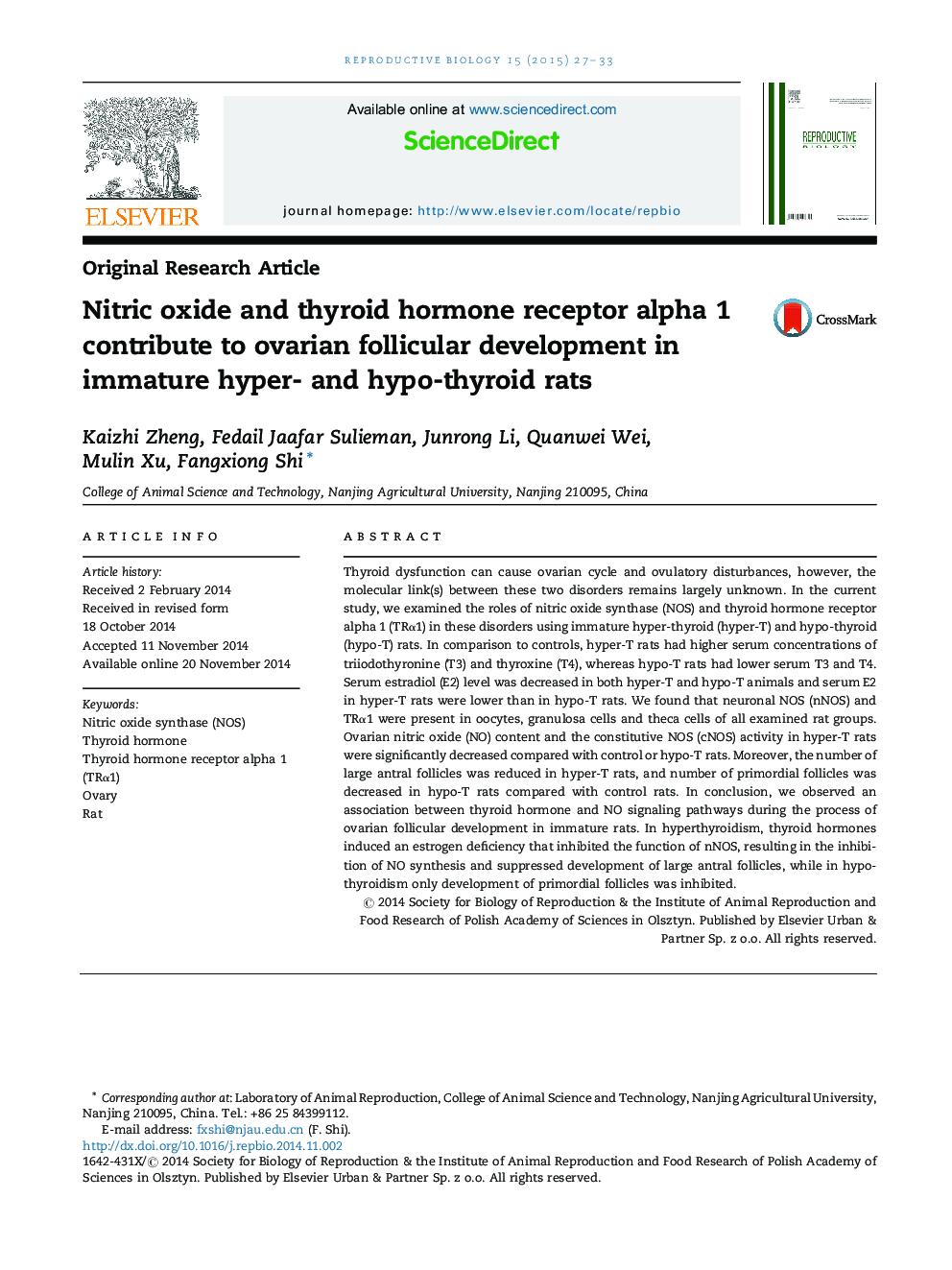| Article ID | Journal | Published Year | Pages | File Type |
|---|---|---|---|---|
| 2062405 | Reproductive Biology | 2015 | 7 Pages |
Thyroid dysfunction can cause ovarian cycle and ovulatory disturbances, however, the molecular link(s) between these two disorders remains largely unknown. In the current study, we examined the roles of nitric oxide synthase (NOS) and thyroid hormone receptor alpha 1 (TRα1) in these disorders using immature hyper-thyroid (hyper-T) and hypo-thyroid (hypo-T) rats. In comparison to controls, hyper-T rats had higher serum concentrations of triiodothyronine (T3) and thyroxine (T4), whereas hypo-T rats had lower serum T3 and T4. Serum estradiol (E2) level was decreased in both hyper-T and hypo-T animals and serum E2 in hyper-T rats were lower than in hypo-T rats. We found that neuronal NOS (nNOS) and TRα1 were present in oocytes, granulosa cells and theca cells of all examined rat groups. Ovarian nitric oxide (NO) content and the constitutive NOS (cNOS) activity in hyper-T rats were significantly decreased compared with control or hypo-T rats. Moreover, the number of large antral follicles was reduced in hyper-T rats, and number of primordial follicles was decreased in hypo-T rats compared with control rats. In conclusion, we observed an association between thyroid hormone and NO signaling pathways during the process of ovarian follicular development in immature rats. In hyperthyroidism, thyroid hormones induced an estrogen deficiency that inhibited the function of nNOS, resulting in the inhibition of NO synthesis and suppressed development of large antral follicles, while in hypothyroidism only development of primordial follicles was inhibited.
